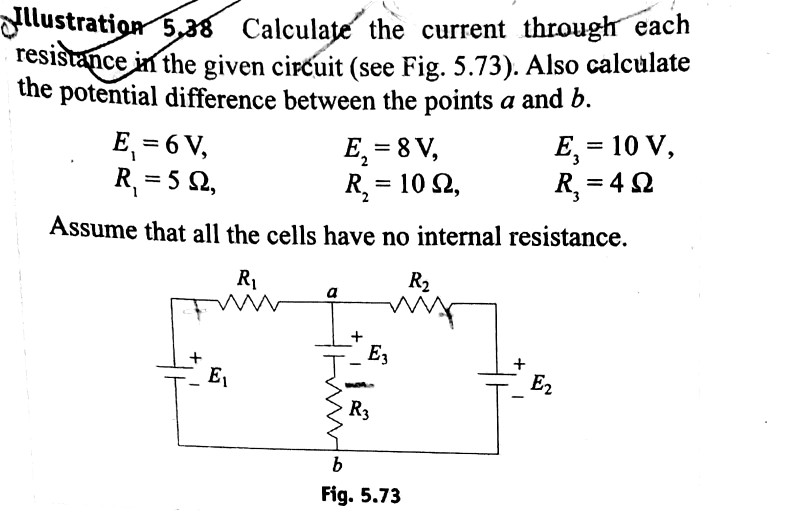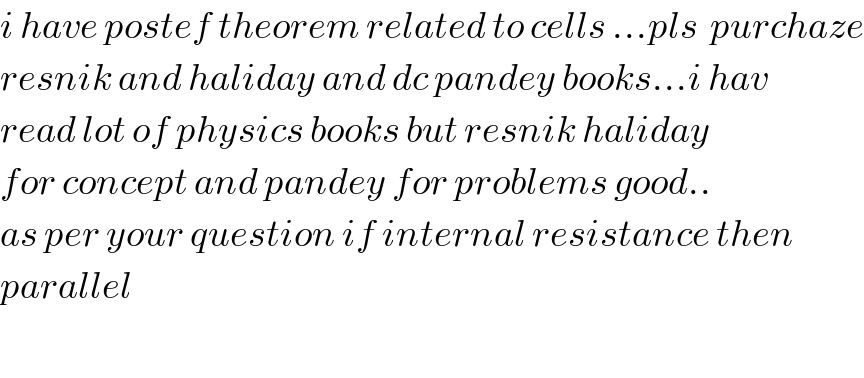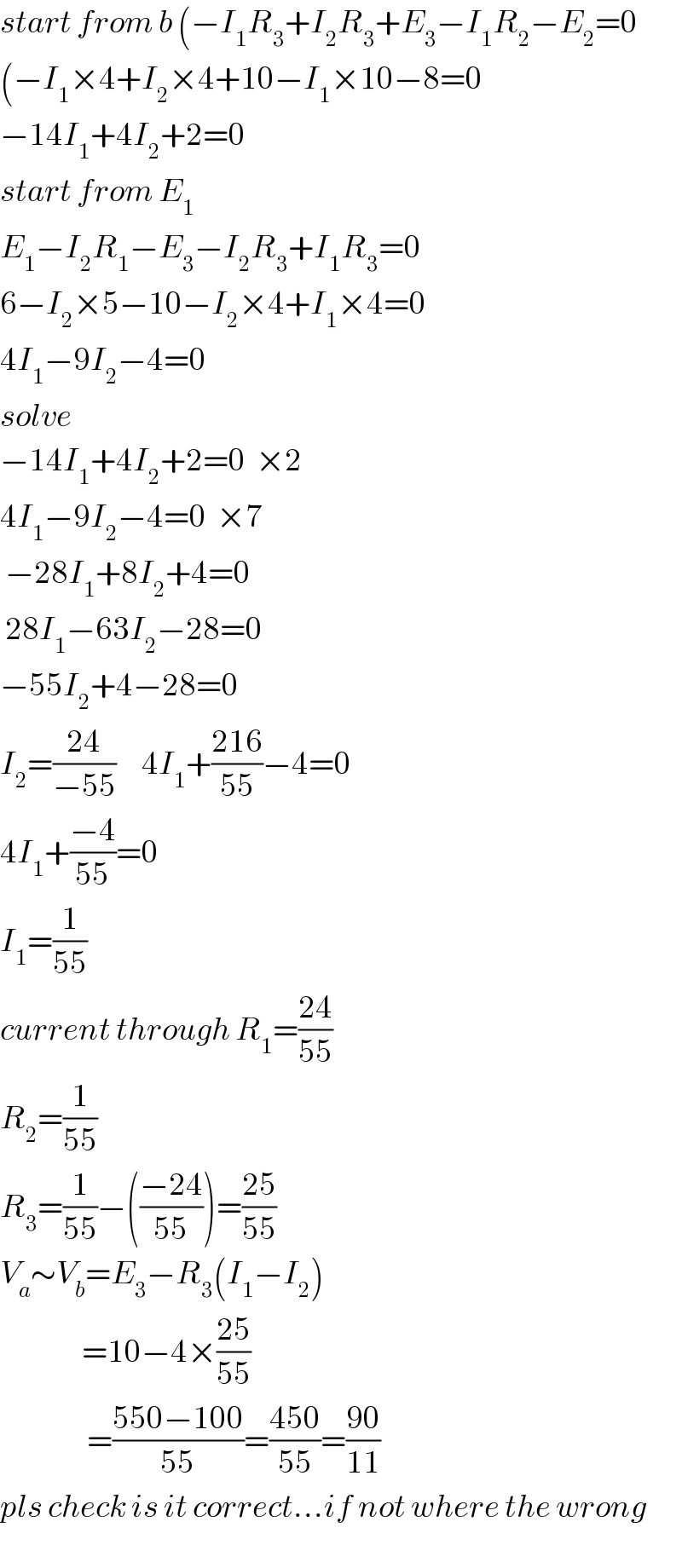Question Number 38967 by rahul 19 last updated on 01/Jul/18

Commented by rahul 19 last updated on 01/Jul/18

Commented by rahul 19 last updated on 01/Jul/18
I' m getting correct ans. by Nodal method but when I do by Parallel grouping of cells , I'm getting wrong ans.
Commented by tanmay.chaudhury50@gmail.com last updated on 01/Jul/18

Commented by tanmay.chaudhury50@gmail.com last updated on 01/Jul/18

Commented by rahul 19 last updated on 01/Jul/18
Assume R1 internal resistance of E1 and R2 internal resistance of E2.
Then all the cells have same P.D , right ? ����
Commented by tanmay.chaudhury50@gmail.com last updated on 01/Jul/18

Commented by rahul 19 last updated on 01/Jul/18

Commented by rahul 19 last updated on 02/Jul/18

Answered by tanmay.chaudhury50@gmail.com last updated on 04/Jul/18

Commented by rahul 19 last updated on 04/Jul/18
Correct!
But I asked for parallel grp. method .
Commented by tanmay.chaudhury50@gmail.com last updated on 05/Jul/18

